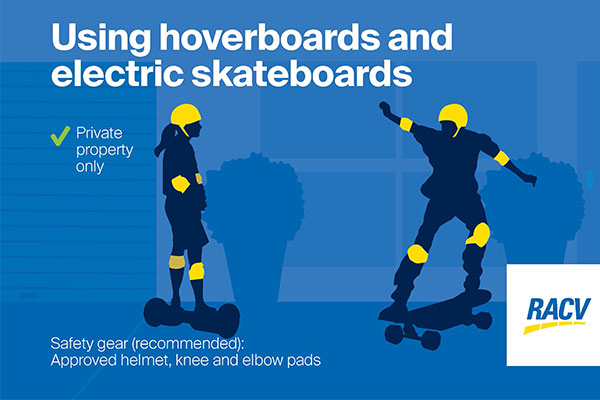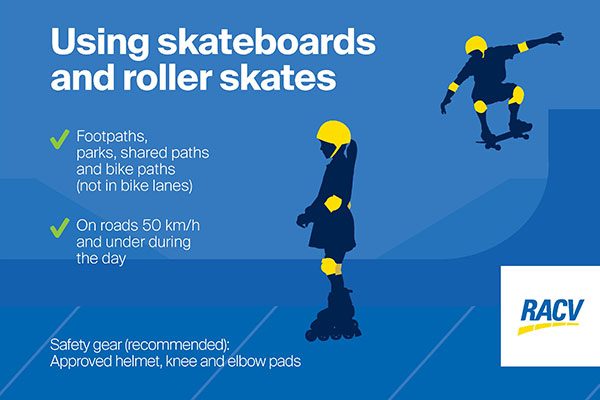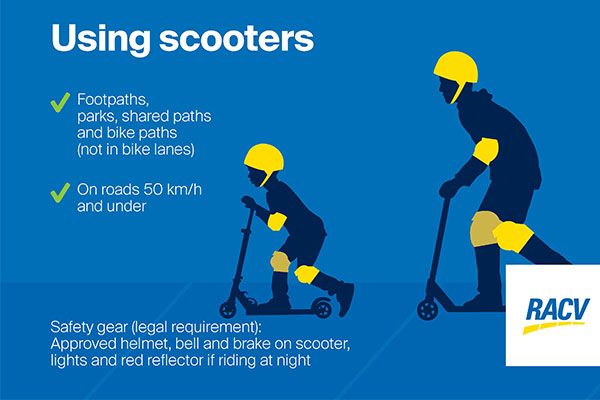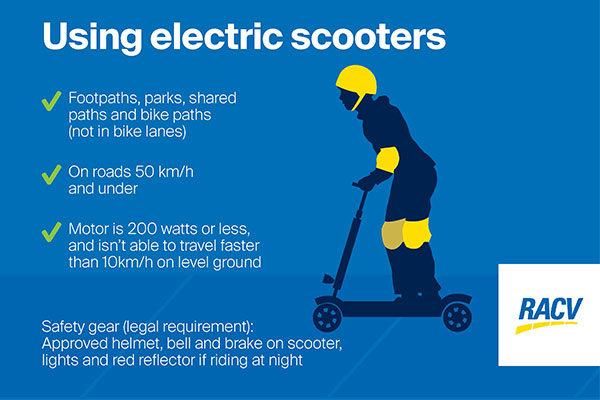The road rules for using scooters, skateboards, rollerblades and other wheeled recreational devices are important to know whether you’re an adult or child. Here, we explore where you can ride, what safety equipment you need, and key facts on motorised devices.
Rules for using wheeled recreational devices
Wheeled recreational devices in Victoria
Wheeled recreational devices include:
- Skateboards
- Roller blades and roller skates
- Scooters
If you’re riding any of these, you’re considered to be a pedestrian, but you must keep left and give way to others sharing the footpath with you as much as possible.
Wheeled recreational devices don’t include:
- Bicycles
- Golf buggies
- Prams, strollers and trolleys
- Segways
- Wheelchairs
- Wheeled toys
- Motorised scooters with a power output of 200 watts or more.
Skateboards, roller blades, roller skates, scooters and e-scooters can be used on:
- footpaths, shared paths and bike paths at any time unless a ‘no wheeled recreational devices’ sign prohibits it; and
- roads with a 50km/h speed limit or under, but only during the day.




Although not always required for skateboards, roller blades and roller skates, RACV recommends wearing a helmet and additional safety equipment such as knee pads and elbow pads when riding.
Specific requirements for scooters
Scooter riders must always:
- wear an approved bike helmet (religious and medical exemptions may apply)
- ride with at least one working brake and warning device (like a bell or horn); and
- have working lights and reflectors visible at the front and back of the scooter at night
- a white light (flashing or steady) on the front
- a red light (flashing or steady) on the back
- a red reflector on the back.
For more information on this topic, visit VicRoads website and refer to rules 240 to 244B of the Victorian Road Safety Road Rules 2017.
Hoverboards, motorised skateboards/roller skates and motorised unicycles are examples of personal mobility devices. You can only use them on private property with permission from the property owner. Use on public roads, footpaths or nature strips is illegal and you can be penalised for operating an unregistered vehicle and driving without a licence.
Learn more about motorised mobility devices.
The summaries RACV provide on Victorian road rules are based on the Victorian Road Safety Road Rules 2017. We make sure to reference the exact rule where possible. When reading, keep in mind that we’re providing general information, not legal advice. If you’re looking for specific questions on any legal matter, consult with a lawyer for help.
